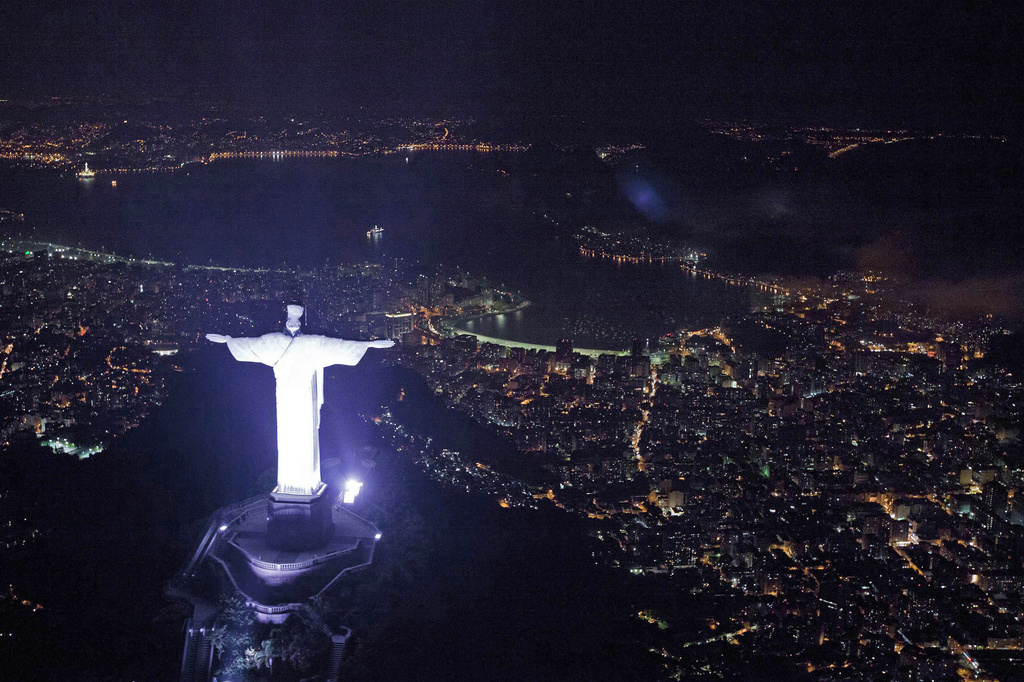
Rio awaits new Swiss trains ahead of World Cup

Rio de Janeiro's Christ the Redeemer statue, which looks out over the city’s dramatic vista of beaches and mountains, is visited by nearly two million tourists a year.
For over three decades red trains made by the Swiss firm Stadler have chugged to the top of the 700-metre Corcovado mountain. The planned switch to more modernised trains will slash journey times and queues, but the deal is beset by administrative hitches.
The Corcovado Train Company, a Brazilian firm that manages rail access from the Cosme Velho neighbourhood to the foot of the 40-metre monument, is trying to purchase three new trains from the Swiss railway manufacturer Stadler, which has production facilities in the Swiss cantons of Thurgau, St Gallen and Zurich.
But the Brazilian firm is facing a number of federal government conditions that are delaying the deal.
The three new mountain trains will cost around BRL40 million ($25.3 million) but the terms of financing for securing the necessary credit could take longer to resolve than the current concession period to operate the lines.
The Brazilian Heritage Department (SPU), which belongs to the planning ministry, has therefore not given the green light to the proposed purchase.
According to Savio Neves, the director of the Corcovado Train Company, they have been waiting for a reply since 2009. And pending any approval, it will take another three years for the trains to be tailor-made in Switzerland.
The hope is that the dispute will be resolved soon, especially as the next football World Cup is to be held in Brazil in 2014.
“We want the trains to arrive before August 2014. The Swiss technicians will then come to help us make adjustments to the trains,” José Joaquim Pinto de Araújo, the head of maintenance, told swissinfo.ch.
Fast ride to top
The new trains closely resemble the current red models but the main aim is to improve customer service.
Neves explained that the new Stadler trains “offer a 30 per cent saving of energy and present a combination of engineering innovations from the past 30 years”.
And with air-conditioning, panoramic views and more space between seats, they also provide much greater comfort, the director added.
But more importantly are a series of technical benefits.
“The train will run a little faster on the Cosme Velho-Corcovado line to reach 25km per hour. The journey, which currently takes 17 minutes, will be possible in 12,” said Araújo.
Currently the railway capacity is 340 passengers per hour but with the new wagons it could almost double to 540-600 passengers an hour.
“This will greatly help our flow of passengers, which has increased by 20-30 per cent annually over recent years,” said Araujo.
Growing in popularity
Another major change will be to the braking system, the engineer explained.
“The current system is hydraulic while the new one will be just air. The new train has a frequency inverter and energy will be regenerated; we will be able to harness the energy of the train when it goes down,” said Araujo, adding that the wagons will also have room to store bicycles and scooters.
The choice of Stadler was an obvious one, said the Brazilian engineer.
“Stadler is one of the biggest manufacturers of mountain trains. The quality is excellent, so much so that our trains completed 32 years of operation on March 9 and remain in perfect condition. But unfortunately they no longer meet demand as growth has been very strong,” he commented.
The world-famous Christ the Redeemer soapstone monument, completed in 1931, is visible from much of the city. Rio extensively used the image, along with bucolic beaches and the popular Sugar Loaf mountain, in its successful bid to host the World Cup and the 2016 Olympic Games.
Every year more than 600,000 people take a train on the Corcovado railway up to the statue of Christ overlooking Rio.
The line was opened in 1884 by Emperor Pedro II, and has since carried popes, kings, princes, presidents, artists and scientists to the top.
The electric train line crosses the largest urban forest in the world: the National Park of Tijuca.
Christ the Redeemer, or Cristo Redentor in Portuguese, is 39.6 metres tall and 30 metres wide and was built between 1922 and 1931. It weighs 635 tonnes and is located at the top of the 700-metre Corcovado mountain in the Tijuca Forest National Park overlooking the city.
The statue, made of reinforced concrete and sandstone, has become an icon of Rio and Brazil.
On 7 July 2007, the statue was named one of the New Seven Wonders of the World in a list compiled by the Swiss-based New Open World Corporation.
(Adapted from Portuguese by Simon Bradley)

In compliance with the JTI standards
More: SWI swissinfo.ch certified by the Journalism Trust Initiative




























You can find an overview of ongoing debates with our journalists here . Please join us!
If you want to start a conversation about a topic raised in this article or want to report factual errors, email us at english@swissinfo.ch.